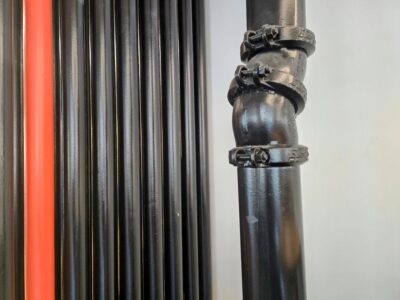You’ve seen ’em. You’ve definitely heard ’em. But have you ever wondered what goes into actually pulling off a professional fireworks show, from the first explosion of color to the sky-searing grand finale?
Here’s a hint: it requires a careful balance of artistic vision and technical precision — and as little human error as possible.
“As with anything that is inherently dangerous, you always have a human element,” said local certified pyrotechnician Curtis Frey. “Human element is always problem number one.”
Officially, Frey initially got involved in with professional pyrotechnics about two years ago, when a friend needed an extra set of hands for a big show. He fell in love with it — and it beat the homegrown firework shows he admits he dabbled in during his youth.
“Instead of paying fines, I’d rather be paid to do it,” he said. The difference between a backyard mortar party and a professionally engineered show is monumental, to say the least. “It’s much safer than home shows — much more technical and a lot longer on the setup,” he said. “This is hours upon hours of planning and implementation for minutes of a show.”
According to Frey, there are three varying styles of shows: hand-fired shows, electronically-fired shows and computer controlled shows. Frey said he’s most well-acquainted with the electronically-fired variety, which he and his team of fellow subcontractors put on at Frawley Stadium in Wilmington every Friday the Blue Rocks play at home.
In an electronically-fired fireworks show, every precisely placed mortar tube is pre-wired to a “pinboard” through which technicians are tasked with launching each firework in their designated succession. According to Frey, the order in which the mortars are set off is designed well before the show. Actually, he said, more experienced pyrotechnicians can design a full show simply by reading the labeling on a firework.
“There’s a general consensus to offer as much variety as possible,” Frey said. “We try to alternate the colors and type of fireworks that go up. Some are straight colors, some have a different colored tail, some pop and then crackle.”
And with the average attention span dropping on what seems to be a daily basis, Frey said the importance of keeping an audience focused on the show is crucial, despite the fact that there are literally explosions happening in the sky.
“Keep it visually interesting and keep everyone on the edge of their seat,” he said. “If you’re [setting off] a series of explosions and anybody is lulled into a sense of relaxation, you’re not doing your job.”
Join the conversation!
Find news, events, jobs and people who share your interests on Technical.ly's open community Slack

Delaware daily roundup: Delmarva Power vendor stats; DelDOT's $15M federal grant; 50 best companies to work for

Delaware daily roundup: Over 4,000 Black-owned businesses uncovered; Dover makes rising cities list; a push for online sports betting

Delaware daily roundup: Ladybug Fest illuminates small biz; Hahnemann Hospital's biotech future; intl. politics and a Middletown project

